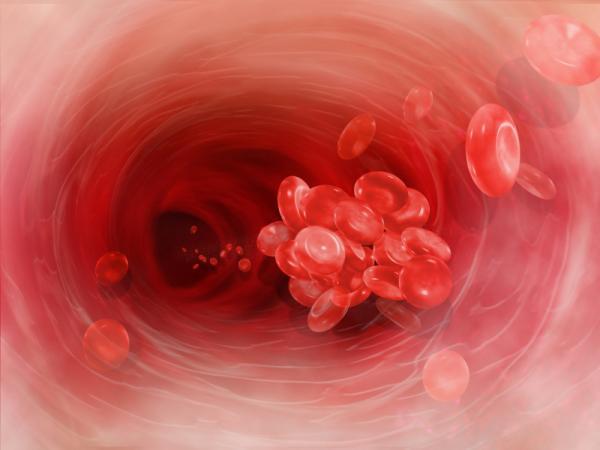Molecular mechanism that regulates blood clotting
With the application of tomography techniques in single-molecule manipulation, researchers at Harvard University discovered the body's basic mechanism of response to regulating blood clotting. This finding may lead to a quantitative predictive model of how the body responds to wounds, and is a suggestion for new treatments for disorders related to bleeding.
The research team led by Professor Timothy A. Springer of the Harvard School of Medicine and Boston Children's Hospital and Wesley P. Wong, Chief of the Rowland Institute at Harvard recently published the results of research on molecular mechanisms. of the feedback round is responsible for the blood clotting phenomenon in Science June 5 last.
'The human body has an amazing ability to heal bruises,' Wong explained. 'The main point of this reaction is the ability to stop bleeding or hemostasis. However, the hemostatic regulation mechanism is still a complex equilibrium phenomenon. '
Too much clotting can cause excess blood clots, potentially leading to fatal embolism. Conversely, if the blood clots are too small, we can lose too much blood leading to death.
In order to achieve a reasonable balance, the body primarily relies on a mechanical response system based on molecular forces due to the circulatory system acting on the molecular 'induction' of the A2 region on the coagulation protein. name von Willebrand factor (VWF).
With the control of single molecules in this region A2, the team found that the A2 region acts as an extremely sensitive force sensor, reacting to the smallest tension by opening out and shrink its complex three-dimensional structure, allowing the ADAMTS13 enzyme to perform molecular cutting.

Researchers have discovered the basic mechanism of response that the human body uses to regulate blood clotting.(Photo: iStockphoto / Rob Gentile)
'In this body, this small cut reduces the ability to stop bleeding and causes blood clots to shrink in size. The system works harmoniously to the A2 sensor that can adjust VWF's size in the blood stream, maintaining the optimal size to react appropriately to body damage, ' Wong said.
This work has contributed to expanding the scope of human understanding of the mechanism of regulating the formation of blood clots, which is also a new step leading to a quantitative predictive model of the body's reaction when it appears. wound. At the same time, this study helps to better understand the disorders associated with bleeding, such as von Willebrand type 2A disease, which disrupts the hemostatic adjustment system, thereby helping to find treatments and new diagnosis.
In addition to Wong and Springer, the authors of the study include: Xiaohui Zhang, Kenneth Halvorsen, and Cheng-Zhong Zhang. The authors acknowledge the contributions from the National Institutes of Health, the American Heart Association, and the companion program with Rowland.
Refer:
Xiaohui Zhang, Kenneth Halvorsen, Cheng-Zhong Zhang, Wesley P. Wong, and Timothy A. Springer.Mechanoenzymatic Cleavage of the Ultralarge Vascular Protein von Willebrand Factor.Science, 2009;324 (5932): 1330 DOI: 10.1126 / science.1170905
- New self-healing resin based on blood clotting mechanism
- Detecting mechanisms to prolong human life
- Finding new ways to overcome the phenomenon of blood clots
- Vitamin K supports blood clotting
- How to prevent stroke
- Anti-clotting socks for stroke patients
- Singapore found a mechanism to make cancer cells 'suicide'
- How does blood pressure work?
- People with blood type O are more likely to die when injured
- New discovery of metastatic mechanism of cancer cells
- New discovery about the immune system
- Molecular detection of memory
 Green tea cleans teeth better than mouthwash?
Green tea cleans teeth better than mouthwash? Death kiss: This is why you should not let anyone kiss your baby's lips
Death kiss: This is why you should not let anyone kiss your baby's lips What is salmonellosis?
What is salmonellosis? Caution should be exercised when using aloe vera through eating and drinking
Caution should be exercised when using aloe vera through eating and drinking